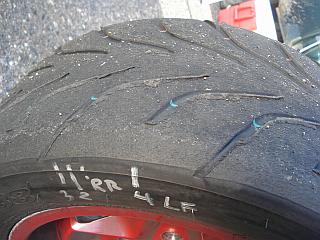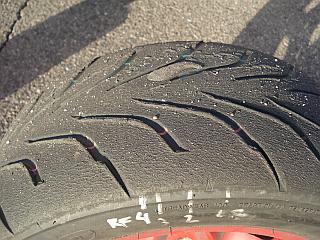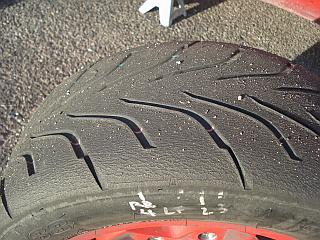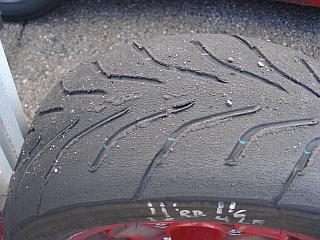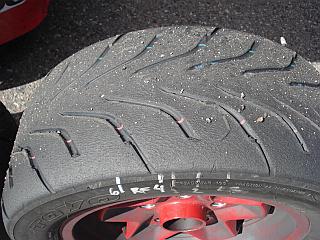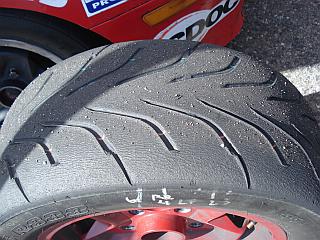I came across this post on specmiata.com and thought it might be helpful.
[quote]I received information from Toyo on some of the differences of the RA1 and the R888. The tire is not a bolt on and away you go replacement.
From Toyo Tire USA
The Toyo Proxes R888 is a totally redesigned product. The construction is completely different than the RA1. Therefore it may require a setup change. The Proxes R888 is a more refined product that requires less slip angles and less camber than the Proxes RA1. If the R888 is driven with the same setup, tire pressures and driving style it may go slower.
The Proxes R888 will not respond well if driven at the same slip angles as the RA1. For example if you slide your car around and build up to much heat the tire will wear prematurely.
Toyo Tire USA
With that being said consider this. High negative camber will give you more bite in the turns but has less contact patch straight ahead, so you have less braking force. With less negative camber braking points can be deeper. All of the instructors I’ve talked to say “smooth is fast.” Sliding scrubs off speed and overheats the tires. High tire temps should not exceed 200 degrees. The new tread design of the Proxes R888 is less succeptable to tread squirm so shaving is less of an issue. But shaved tires are lighter so they have less rotating mass. The Proxes R888 has tread grooves full depth, so a 3/32 tire will still have some water channeling.
When I get more information I’ll be sure to pass it on.
Joe
TheTireShoppe[/quote]
There were some follow-up questions about what value Joe considers to be “high negative camber,” but no answers yet.
Joe is recommending a narrower operating temperature range than Toyo states on its website (max 200 deg., not 220).
Time to change my driving style a bit from the slide-it-around RA1…
Steve D.
PS - I wonder if my sliding the R888s contributed to the fact that I had to start with much lower temps to avoid going over 40 hot. I wonder if I am building more heat than would be typical with less sliding… Which in turn greases the tires, causing more sliding…






